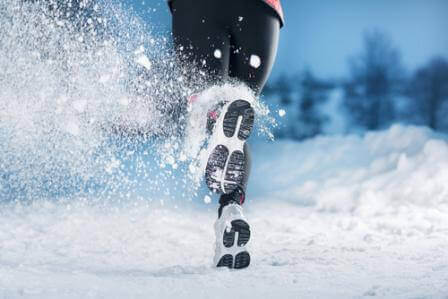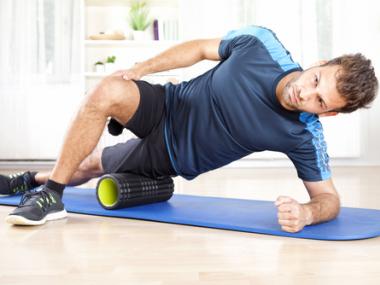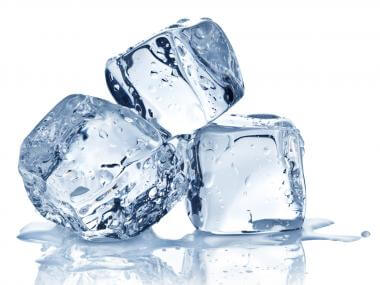3 Chilling Benefits of Cold Exercise
Learn from these three articles on pre-cooling before workouts, exercising in the cold, and cold water for recovery.

In “More Proof That Ice Can Help You Get Fit,” I introduce two studies from last year that prove the effectiveness of cold thermogenesis, icing, and cold water immersion for alleviating muscle soreness, exercise-induced muscle damage, and inflammation (although, as you’re about to discover, there can be “responders” and “non-responders”).
In that same article, I mention that I keep my home at a constant 60-65 degrees, take two icy cold showers a day, use a fat burning ice vest during the summer, and implement lots of other body cooling strategies that I explain in my Cold Thermogenesis How-To article and also in my comprehensive T-Nation article “Cold Temps for a Hot Body.”
Finally, as if that weren’t enough to make you think I’m obsessed with cold things, I dispel the myth that “icing a muscle is bad for you” in Are Cold Showers and Baths Really Bad for You?
But this month, I’ve discovered three recent articles on cold exposure: articles that you may want to pay close attention to if you want to maximize the benefits of exercise by using the cold. Let’s dive into this chilling body of research, shall we?
1. Get Cold Before Your Next Workout
In this first study “Running performance in the heat is improved by similar magnitude with pre-exercise cold-water immersion and mid-exercise facial water spray,” you learn about why you may want to take a cold shower before your next hard workout or run.
In the study, researchers compared the effects of pre-cooling before exercise and mid-exercise cooling on running time trial performance and the physiological response to running. In this case, trained male runners completed a total of three 5 km running time trials on a non-motorized treadmill in relatively hot conditions (a nice balmy temperature of 91.4F!). Each trial included pre-cooling by cold-water immersion, which is basically sitting in a cold bath, mid-exercise cooling with a cold facial water spray, and a control group that (poor fellas) received no cooling at all. Researchers monitored temperature, cardiorespiratory, muscular activation, and how hard the runners perceived the exercise to be, along with blood lactic acid levels.
Running performance time was significantly faster following cold water immersion and also when getting sprayed with cold water during exercise. Both cooling strategies significantly reduced body temperature and increased the strength of muscle activation. Even the gold standard of body temperature measurement during exercise, rectal (yes rectal) was significantly lowered by a pre-cooling bath both pre-exercise and during the entire run, and also produced a lower sweat rate.
So even if you don’t have a big icy bath to soak in, try this: rather than waiting until after your next workout or hard run to shower, jump in a cold shower beforehand.
2. Exercising in the Cold Doesn’t Make You Sick
Sure, we all remember our mothers telling us to put on our coats before venturing outside so we didn’t get the sniffles, but based on the latest research, exercising in the cold does not make you sick (and actually produces even more benefits compared to not exercising in the cold).
In Salivary Lymphocyte Responses Following Acute Anaerobic Exercise in a Cool Environment, researchers examined the impact of anaerobic (hard, intense) training on salivary lymphocytes, which are a white blood cell component of your immune system, and compared the immune system response to cool versus a regular environment. Nine lightly clothed volunteers completed speed, agility, and quickness sessions in both warm (66 degrees) and cool (50 degrees) temperatures. Their testing consisted of three separate trials of 20 meter sprints, 40 meter sprints, t-tests (a type of agility test), box jumping drills, and two 300 yard shuttle runs—for both the regular and cold groups.
Then the researchers collected saliva samples to check the white blood cell response immediately post exercise, and after two hours of recovery. So what did they find? White blood cell count increased immediately post exercise, followed by a decrease below baseline values after two hours of recovery, and this happened for both regular and cold groups. But compared to baseline measures, changes in the immune system were of a smaller magnitude following exercise in the cool environment when compared to a regular environment, which indicates that exercise in the cold doesn’t stress your immune system but instead produces small fluctuations in your immune cells that may actually make you more resilient to getting sick (and, by the way, this phenomenon of something you think is bad for you actually being good for you in small doses is called “hormesis”).
3. Cold Water Might Enhance Your Recovery
You heard right: cold water just might enhance your recovery from exercise.
You heard right: cold water just might enhance your recovery from exercise, but it turns out that there are “responders” and “nonresponders” to this technique.
In this last study, Can cold water immersion enhance recovery in elite Olympic weightlifters?, researchers investigated whether cold water immersion following a very hard training session could enhance recovery in elite Olympic weightlifters, but rather than studying the entire group of weightlifters as a group, they took into account each athlete’s individual response to cold water immersion. The entire German male Olympic weightlifting national team participated in the study, and each went through two high intensity training periods that consisted of five training sessions either followed by a cold water immersion or passive, non-cold recovery. The researchers measured barbell speed in a snatch exercise, a variety of blood parameters related to recovery, and subject’s ratings of general fatigue and recovery.
It turns out that physical performance at two snatch pull intensities (85% and 90%) did not differ significantly with cold water immersion post exercise. There was a significant decline in ratings of overall recovery and a significantly higher rating of overall stress over time (as you can imagine based on five very hard training sessions), but no significant differences between conditions could be found. Testosterone and cortisol, two important recovery measurements, also did not change significantly. So cold water immersion, at first glance, did not seem to be an effective tool to enhance recovery in these elite Olympic weightlifters over a three day intensive training period with five training sessions over those three days.
But here’s the kicker: some athletes did indeed experience significant improvements in performance and testosterone to cortisol ratios when using cold water immersion after their workouts during this three day period, indicating that there can be both “responders” and “non-responders” to icing and cold after a workout. My recommendation is to use yourself as an N=1 and use any of my favorite recovery measuring techniques to assess your individualized response to cold therapy and icing post workout.
For even more practical tips about how and when to use cold thermogenesis, cold showers, icing muscles and more, follow the links in the intro to this episode! If you have questions, comments or feedback about these three chilling ways to get more benefits out of exercise in the cold, you can join the conversation at Facebook.com/getfitguy!






